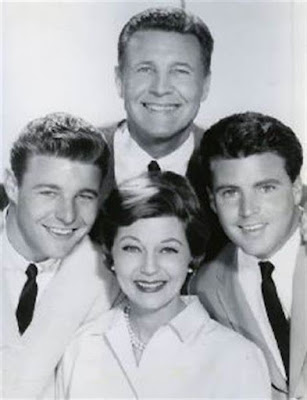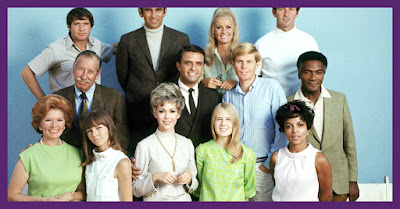One of the most common plotlines in classic TV shows introduces the possibility of moving from one residence to another. In almost every case the idea at first generates much support and excitement, then gradually loses some of its appeal, until the third-act epiphany that results in our characters realizing they’d rather stay where they are.
Viewers are usually ahead of the characters on this story, because they know an actual move would necessitate new sets and a series that looks different from what it had to that point. That’s why it was so surprising that when Mary Richards talked about moving, she actually went through with it.
And maybe that’s another reason it didn’t happen more often. Mary’s original apartment had a quirky charm, with its multi-levels, Palladian windows, stained-glass kitchen divider, and that eponymous brass ‘M’ on the wall. After five seasons it was a place we looked forward to visiting every Saturday night.
But when she left that space in the second episode of season six (“Mary Moves Out”), it was like losing another beloved character on a show that already weathered the departures of both Rhoda and Phyllis.
Her new place was pleasant, if a bit drab, and not as easy to recall in one’s memory even if you recently watched an episode. Even Mary took some convincing. After hanging up her “M” she took a long look at her new space and admitted, . “I don’t like it.” But at least we finally got to see her bathroom (“Mary’s Insomnia”).
The Bob Newhart Show, which followed Mary on many a Saturday night, also did the moving story in the first episode of its final season. But the floor plan of the Hartley’s new apartment was so similar to the one they left that many viewers probably thought they just redecorated.
On I Love Lucy the Ricardos eventually moved as well, from a New York apartment to a house in rural Connecticut, a move that inspired the longest laugh in series history.
But these were the exceptions. Most moving stories end with the family staying put.
Which came closest without following through? That would be another family moving from New York to Connecticut – the Davises on Family Affair. In “A House in the Country” Uncle Bill decides Manhattan with its “dirty air” and “everybody pushing and shoving” is no place to raise kids, so he takes the family to a beautiful country estate which they love – until they realize the move is permanent. It is only after the movers arrive and clean out their apartment that Bill realizes the move is a mistake, and reverses course.
One element I’ve always respected about this series is how it never forgot the traumas the children suffered before arriving on Bill’s doorstep. The thought of being uprooted and leaving another home, the first one they’ve been truly happy in, brings back all of their old anxieties.
They’re content where they are, and have already become acclimated to the native New Yorker perspective that everything outside the city is untamed wilderness. “Is it past 63rd Street?” one of Buffy’s friends inquires about where to find Connecticut. “It’s past 65th Street!” Buffy responds, unable to conceal her astonishment at such a foreign concept.
By contrast, the Bradys hadn’t even started boxing up the kitchenware before the kids decided, after repeated cries of “Mom, we need a bigger house!” that they really didn’t want to leave (“To Move or Not To Move”). But as much as the Brady residence has become as iconic as any classic TV home, this is one time when moving probably makes sense. One bathroom for six kids is hardly practical - especially after those dinners where Alice serves enchiladas.
Like the Bradys, the Partridge
family also toyed with moving (“For Sale By Owner”) only to realize they’d
rather not. Unfortunately, by the time they all changed their minds, Reuben has
sold their house. Spoiler alert: they get it back.
Ozzie and Harriet Nelson never reached the packing stage either, though like many soon-to-be empty nesters they wondered whether their house was too big for just two people, and whether an apartment might be more suitable and require less upkeep (“The Nelsons Decide to Move”).
It’s an understandable impulse that I will have to grapple with as well. The time will come when I will be alone in a 2,500 square-foot house that may be too big for one person. But I love it here, and I’m locked into a 30-year mortgage at 2.5%, having closed escrow long before Mr. Build Back Better tripled that rate.
Loving where you live – that’s the motivation that keeps most classic tv families where they are. Like the Bradfords on Eight is Enough. In “The Return of Auntie V” Tom’s wealthy and impulsive sister buys a stunning estate for the family, a massive upgrade on their somewhat ramshackle residence.
But Tom doesn't want to leave. “This house speaks to me,” he says, and it’s one of those simple lines that resonates well beyond what its writer intended. There’s a feeling of comfort, and stability, and security in the place where you raised your kids and celebrated holidays. Complaints over small closets and leaky pipes are no match for the disinclination of living elsewhere. And when most people feel that way about their homes, it brings a promise of sociable neighborhoods and closer-knit communities.
It seems that is no longer as common as it used to be. As Carole King once sang, “Doesn’t anybody stay in one place anymore?” They do in the land of classic TV, which is yet another reason why it is such a welcoming place to visit.



































